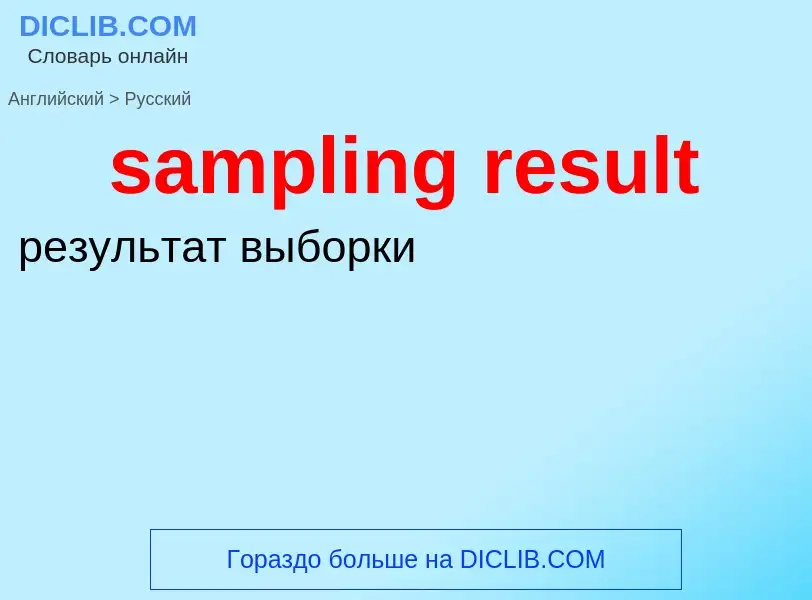Перевод и анализ слов искусственным интеллектом ChatGPT
На этой странице Вы можете получить подробный анализ слова или словосочетания, произведенный с помощью лучшей на сегодняшний день технологии искусственного интеллекта:
- как употребляется слово
- частота употребления
- используется оно чаще в устной или письменной речи
- варианты перевода слова
- примеры употребления (несколько фраз с переводом)
- этимология
sampling result - перевод на русский
2) проистекать, следовать
- assessed result
- collected results
- company-wide results
- experimental result
- inspection result
- iterative result
- numerical result
- sampling result
[ri'zʌlt]
общая лексика
результат
получать (получаться) в результате
вывод
итог
кончаться
получаться
порождение
приводить
проистекать
следовать
эффект
медицина
исход
существительное
[ri'zʌlt]
общая лексика
результат
исход
следствие
результат, исход
результат вычисления, итог
математика
итог
ответ
синоним
антоним
глагол
общая лексика
(from) следовать
происходить в результате (чего-л.)
проистекать
(in) кончаться (чем-л.)
иметь (своим) результатом (что-л.)
следовать, происходить в результате, проистекать
кончаться, иметь результатом
редкое выражение
переходить к прежнему собственнику
синоним
['ʌpʃɔt]
существительное
общая лексика
(the upshot)
развязка
результат
заключение
вывод
развязка, заключение
Википедия

To enhance water quality monitoring in a drinking water network, water sampling stations are installed at various points along the network's route. These sampling stations are typically positioned at street level, where they connect to a local water main, and are designed as enclosed, secured boxes containing a small sink and spigot to aid in sample collection. Collected samples are analyzed for bacteria, chlorine levels, pH, inorganic and organic pollutants, turbidity, odor and many other water quality indicators.
In the United States, water sampling stations aid in public infrastructural safety in regards to water quality monitoring and help municipalities comply with federal and state drinking water regulations. New York City has 965 sampling stations that are distributed based on population density, water pressure zones, proximity to water mains and accessibility. The stations rise about 4½ feet above the ground and are made of heavy cast iron. Using these stations, the New York City Department of Environmental Protection (DEP) collects more than 1,200 water samples per month from up to 546 locations.


